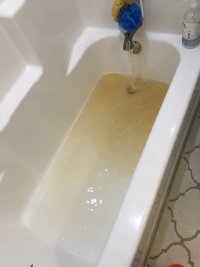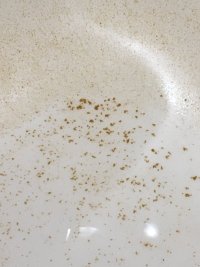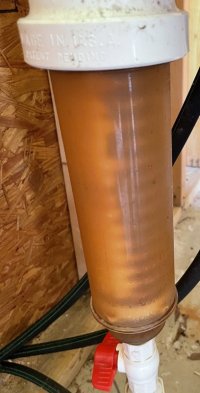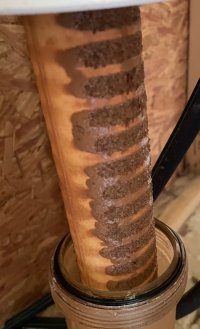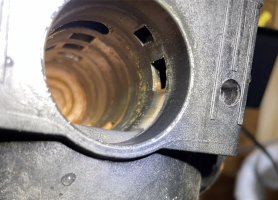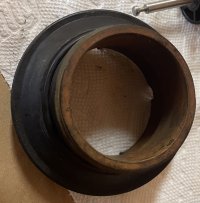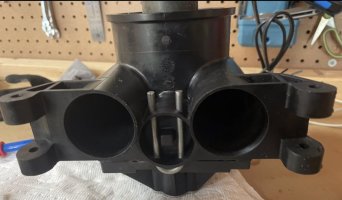Es_sayd
New Member
Hello. Seeking help.
We have a 450’ well, sediment filter, high efficiency iron “cleer“ filter, and water softener that is two years old. The first year before the iron filter and softener, we thought our water was amazing, like a spring. Eight months in, we began experiencing intermittent orange-brown water at our far water lines. The less water use…the more brown water.
Our well was professionally sanitized (bleach flush)…then shortly after, a popular commercial water softening company shared our condition from high iron.
We installed the sediment screen filter, the HE Iron Cleer filter, and Softening system. All was good for eight months, with exception to cleaning the sediment filter every 3-7 days. That issue was orangish-brown mud which we believe is Iron Bacteria. The local water systems share our water is good, no bad bacteria. The water runs clear as well.
Fast forward, our Cleer Filter began failing continuously (Right at a year old). It’s always the seal-pack and/or motor to move the seal-pack plunger. Failure would occur within a week. The service calls and maintenance quickly broke us.
Unfortunately, we believed the HE Iron Clear system would counter the Iron challenges. In the manual fine print…is has one section that states the system doesn’t work against Iron Bacteria, which we believe is our main issue.
I helped that company tech with the system and can take apart, clean, and replace the system. The plunger/pack seal is difficult to move At times. The cleaning is the iron bacteria (orange-brown buildup). Rush away products is what they use…and it works good for cleaning, but doesn’t solve the issue.
My question or request for help is what else to add? Is there any recommendations? Is there something we can do to eliminate the Iron Bacteria before the Iron Cleer system? it appears as though a UV Filter would help eliminate the Iron Bacteria…but our problem exist before the Iron Filter, not after it. We don’t want an unnecessary filter…but want to resolve this. Our neighborhood has eight homes, and none of the others have this issue.
Looking for help. None of the four local drill companies, the seven plumbing companies, or the commercial softening company have any ideas.
if it helps…other info, the water direct out of the well is clear (not muddy) has a lot of air in it. The water almost appears milky until the air dissolves. The well has been pulled and inspected…it looked new (PVC was clean). We ran a camera into the well…there is definitely air bubbling up from well below the pump. It’s not sulfer. We know that during one of two early well treatments, that chlorine pellets, like for a pool were poured into the well. That was two years ago as well.
thank you for reading the long story. SD
We have a 450’ well, sediment filter, high efficiency iron “cleer“ filter, and water softener that is two years old. The first year before the iron filter and softener, we thought our water was amazing, like a spring. Eight months in, we began experiencing intermittent orange-brown water at our far water lines. The less water use…the more brown water.
Our well was professionally sanitized (bleach flush)…then shortly after, a popular commercial water softening company shared our condition from high iron.
We installed the sediment screen filter, the HE Iron Cleer filter, and Softening system. All was good for eight months, with exception to cleaning the sediment filter every 3-7 days. That issue was orangish-brown mud which we believe is Iron Bacteria. The local water systems share our water is good, no bad bacteria. The water runs clear as well.
Fast forward, our Cleer Filter began failing continuously (Right at a year old). It’s always the seal-pack and/or motor to move the seal-pack plunger. Failure would occur within a week. The service calls and maintenance quickly broke us.
Unfortunately, we believed the HE Iron Clear system would counter the Iron challenges. In the manual fine print…is has one section that states the system doesn’t work against Iron Bacteria, which we believe is our main issue.
I helped that company tech with the system and can take apart, clean, and replace the system. The plunger/pack seal is difficult to move At times. The cleaning is the iron bacteria (orange-brown buildup). Rush away products is what they use…and it works good for cleaning, but doesn’t solve the issue.
My question or request for help is what else to add? Is there any recommendations? Is there something we can do to eliminate the Iron Bacteria before the Iron Cleer system? it appears as though a UV Filter would help eliminate the Iron Bacteria…but our problem exist before the Iron Filter, not after it. We don’t want an unnecessary filter…but want to resolve this. Our neighborhood has eight homes, and none of the others have this issue.
Looking for help. None of the four local drill companies, the seven plumbing companies, or the commercial softening company have any ideas.
if it helps…other info, the water direct out of the well is clear (not muddy) has a lot of air in it. The water almost appears milky until the air dissolves. The well has been pulled and inspected…it looked new (PVC was clean). We ran a camera into the well…there is definitely air bubbling up from well below the pump. It’s not sulfer. We know that during one of two early well treatments, that chlorine pellets, like for a pool were poured into the well. That was two years ago as well.
thank you for reading the long story. SD

